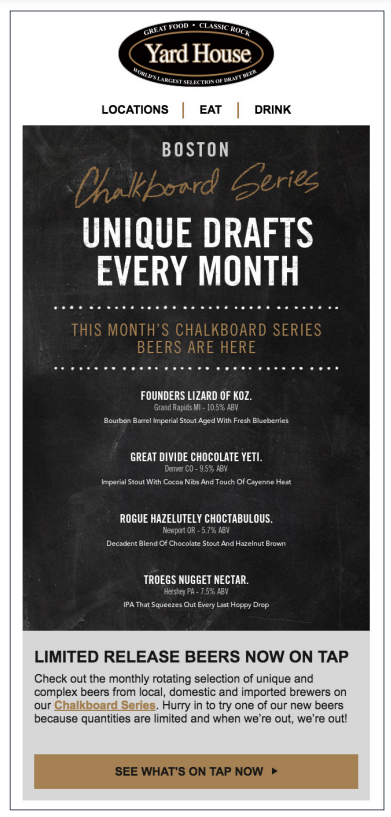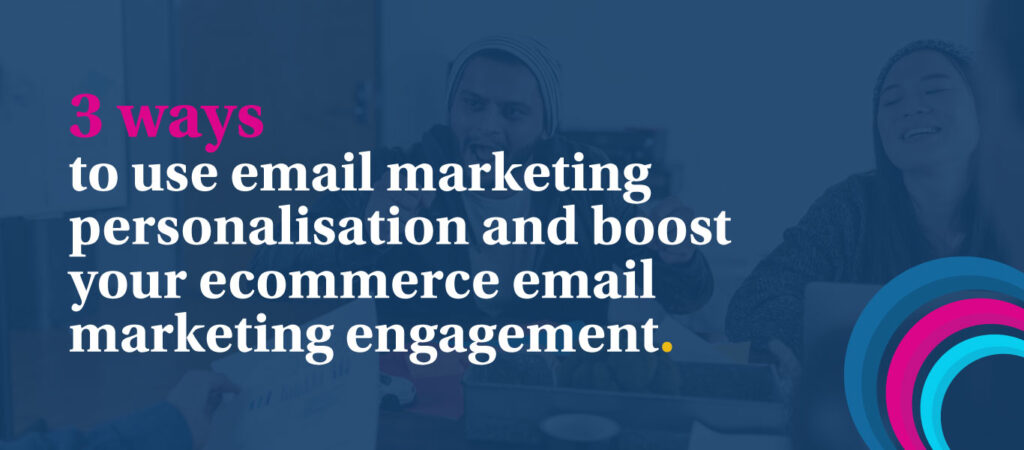The buying landscape has changed.
As more brands bolster their online presence and fight ever harder for customer share, marketers need to optimise, adapt and add to their email marketing strategy to make the most of this high performing channel.
The online space continues to grow and evolve because of this and consumers expect and want more from the experiences they have with the brands they choose to interact with – and we’re starting to see this in the offline world too with more interactive store experiences and the connection of online and in-store technology.
As brands make better use of their database and the ability to directly communicate with this audience, email marketing is your primary channel to build and nurture the relationship to conversion and beyond.
76% of buyers expect more personalised attention from marketers*
To meet user demand within our email marketing, we need to LISTEN to our subscribers.
Through intelligent collection and analysis of data, we can achieve this at varying levels.
83% of customers are willing to share their data to create a more personalised experience*, and it’s with this data that we can pick up on direct and indirect signals from our prospects and customers that will allow us to tailor the information/offers they receive within their emails unlike in any other marketing channel.
When we can send the right message to the right person, at the right time (and in the wider strategy, through the right channel), we can have a positive impact on our subscribers AND our revenue – 80% of customers are more likely to purchase from a brand that provides personalised experiences*.
Personalised content isn’t a nice to have any more – it should be a core part of your strategy.
By 2022, 55% of B2C marketers are making personalisation a priority and 90% of marketers believe that personalisation is imperative to overall business strategy*.
So how can YOU bring email personalisation into your current strategy?
Here are 3 ways to get you started…
Personalisation based on –
1. Previous Purchases
As an ecommerce business, you’ll have a wealth of previous purchase data stored.
If this isn’t already feeding into your ESP/Marketing Automation platform take a look at what’s there and how you can feed this data through so that it’s available for analysis and use in your campaigns.
Consider tactics at a segmentation level (such as eRFM analysis) and and in your content to serve up relevant product suggestions based on this information.
This could be as simple as other items within the same/associated product categories, all the way through to complex algorithms around specific product tags or even AI to predict what a subscriber might be likely to want next.

2. Behaviour (across multiple marketing channels – e.g. web, email, apps etc.)

Your subscribers recent and current behaviour across your marketing channels is a key insight into what they currently need.
For example, if you track a subscriber looking at the FAQ’s section of your website, they may be searching for additional support. If they are browsing a specific category on your website but haven’t bought, they may be in need of some help narrowing down their choices.
Logging into your app, opening and clicking on specific email types/content and a whole range of other actions/inactions from your website, apps, email, social and other marketing channels, you can start to automate new emails around the customer lifecyele and tailor the content/product recommendations you provide accordingly to better meet each subscribers’ needs at that time.
Consider campaigns such as abandoned basket/browse, follow up information to support an action taken, or emails to encourage the subscriber to log in/visit specific content if they haven’t within a specific timeframe.
3. Known Data
Demographic and firmographic data can be used to change elements such as images, copy, CTA text… basically anything in your email!
Consider data you can ask your subscriber for during sign up, as part of a survey, preference centre or in-email polls; such as gender, location, company type, interest preferences. Plan how this data can be used to adapt your copy, imagery, CTA and links to better connect with and engage your subscribers in their current situation.

* Litmus 2021




